All issues

Volume 3 (1966)
- Issue 4 Pages 249-
- Issue 3 Pages 167-
- Issue 2 Pages 83-
- Issue 1 Pages 5-
Volume 3, Issue 1
Displaying 1-5 of 5 articles from this issue
- |<
- <
- 1
- >
- >|
-
Goro Yasukochi1966 Volume 3 Issue 1 Pages 5-11
Published: 1966
Released on J-STAGE: October 28, 2009
JOURNAL FREE ACCESSDownload PDF (2006K) -
Sachiko Hashimoto1966 Volume 3 Issue 1 Pages 12-18
Published: 1966
Released on J-STAGE: October 28, 2009
JOURNAL FREE ACCESSDownload PDF (2299K) -
Report 1. Intelligence of Hemiplegic Patients after StrokeTakuya KANEHISA, Masaaki SUGA, Michio KOHNO, Junichi SONODA, Gohichi H ...1966 Volume 3 Issue 1 Pages 41-46
Published: 1966
Released on J-STAGE: October 28, 2009
JOURNAL FREE ACCESSThe Wechsler-Bellvue Adult Intelligence Scale was performed to thirty-four hemiplegic patients who were diagnosed as cerebrovascular lesion of internal capsule and ten healthy persons as control. Distributions of age, sex and grade of education of both groups were not statistically significant. The results were as follows:
1) The scores of hemiplegic group was lower than that of control group, especially the difference was statistically significant in total verbal scale, total performance scale, information, arithmetic, similarities, digit span and picture arrangement.
2) Mean score of total verbal scale of right hemiplegics was lower than that of left hemiplegics, but the difference was not statistically significant except that of arithmetic and digit span.
3) Comparing the differences between verbal and performance scale score of performance scale was lower than that of verbal scale and the difference was statistically significant in left hemiplegic and control group, but in right hemiplegic group the difference of them was not significant because of reduction of the score of verbal scale.
4) No definite relationship was proved between each scores and the presence of conscious disturbance or the time examined.View full abstractDownload PDF (756K) -
Report 2. Bender Gestalt Test of Hemiplegic Patients after StrokeTakuya KANEHISA, Masaaki SUGA, Michio KOHNO, Junichi SONODA, Sunao YOS ...1966 Volume 3 Issue 1 Pages 47-52
Published: 1966
Released on J-STAGE: October 28, 2009
JOURNAL FREE ACCESSThe Bender Visual-Motor Gestalt Test was performed in twenty-nine hemiplegic patients after stroke and thirty healty persons as control. The results were as follows.
1. The time required for test was eight minutes and thirty-six seconds in hemiplegic group and three minutes and forty-one seconds in control group in average. It required longer time to perform the test for hemiplegic group than for control group, but there was no specific relationship between the time required and distortion of figure.
2. Pascal-Suttell's Score of hemiplegic group was higher than that of control group and the difference was statistically significant.
3. There was a high inverse correlation between Pascal-Suttell's score and score of Wechsler-Bellvue intelligence Scale in hemiplegic group (r=-0.7857).
4. Figures of Bender Gestalt Test were classified by inspection into three groups according to the grade of their distortion. This classification was in accord with the distribution of Pascal-Suttell's score in general.
5. It is presumable that hardness of the motivation of a patient will be estimated from his Pascal-Suttell's score of Bender Gestalt Test in rehabilitation process.View full abstractDownload PDF (641K) -
Nobuyuki SAWAKI, Ryoichi HANAKAGO1966 Volume 3 Issue 1 Pages 53-60
Published: 1966
Released on J-STAGE: October 28, 2009
JOURNAL FREE ACCESSIn an attempt to know the actual state of the apoplectic outside the hospital, a crosssectional population survey was made from the viewpoint of the rehabilitation at Kuzumaki Town in Iwate Pref. in Augusts, 1964, with the following results:
1) Kuzumaki is a town of 433.9 square km. in area with a population of 16, 649. Its death rate is 7.99‰ a year and that from apoplexy is 2.76‰
2) By the method of multiple information, 62 apoplectic patients were found, being 3.72‰ of the population, of which 74% were males and 26% females. The incidence was found in 7.19‰, 3.41‰, and 3.49‰. respectively in the three different regions of the town; 0.4‰ in 30-39-year, 2.2‰ in 40-49-, 9.7‰ in 50-59-, 32.0‰, in 60-69-, 38.1‰ in 70-79- and 10.4‰ in over 80- year groups.
3) Clinical diagnosis made on the basis standardized by the group in the Ministry of Education, 1962, “Cause of apoplexy, with special reference to specificity of Japanese” revealed 65% of cerebral infarction, 27% of intra-cranial haemorrhage and 8% of transitory cerebral ischemia and so on.
4) An evaluation of activities of daily living (ADL) of the patients revealed 13% in the dependent group, 13% in the partially dependent group, 47% in the partially independent group and 27% in the independent group.
5) The correlation of several factors with ADL of the patients was studied and the factors associated with poor rehabilitation potential are summarized as follows: (1) Woman, (2) Age over fifty, (3) Cerebral infarction with recidiv, (4) Right hemiplegia, (5) Markedly impaired speech, (6) Fecal incontinence, (7) On the functional tests; (a) Unable to raise the suffered leg as stretching on the supine, (b) Under the head on arm-raising and (c) Not over the middle finger on the opposition of thumb and the other, (8) Limitation of passive range of motion and (9) Bad motivation and emotional incontinence.
6) Only 32% of the patients were admitted to the hospital after the stroke and only 21% were administered physiotherapy like massage.
7) On the basis of the results obtained, above we emphasize that the promotion of study and establishment of institutes are necessary for the rehabilitation of the apoplectic.View full abstractDownload PDF (1145K)
- |<
- <
- 1
- >
- >|